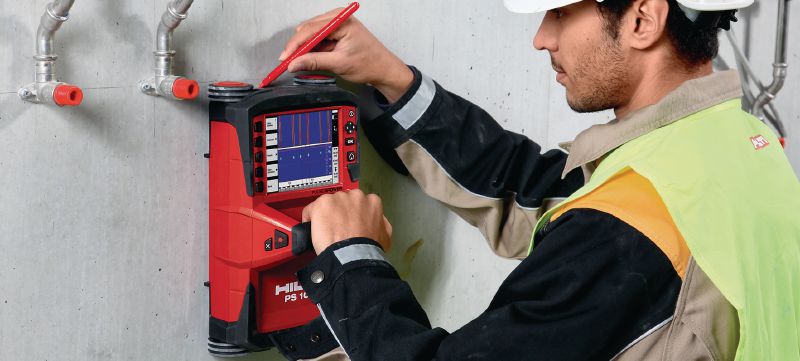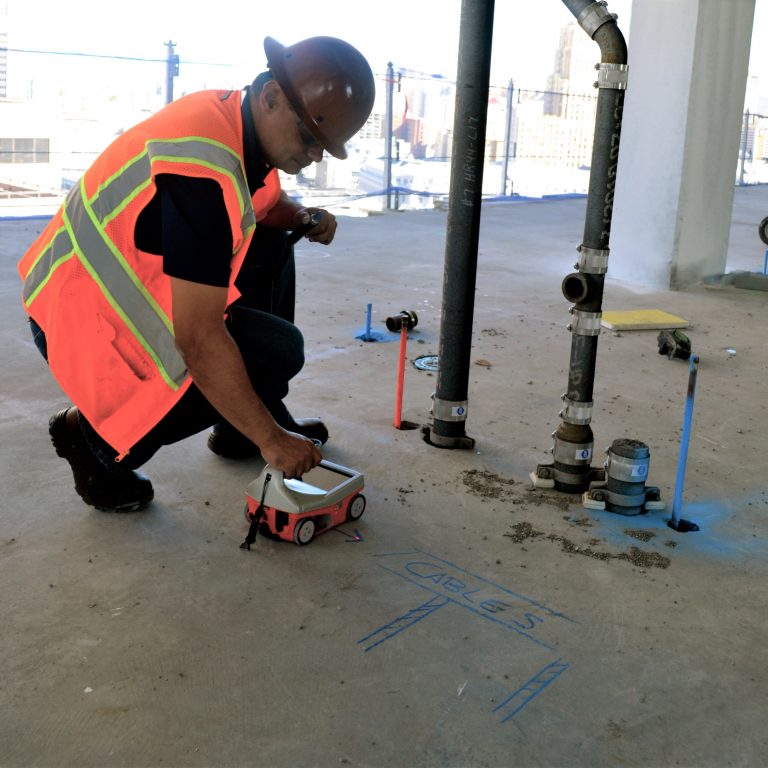Unveiling the Power of RainierGPR Concrete Scanning Modern Technology
Unveiling the Power of RainierGPR Concrete Scanning Modern Technology
Blog Article
Harness the Strategic Side of Concrete Scanning for Unparalleled Project Success and Quality Assurance
In the world of modern-day building and construction and facilities development, the application of concrete scanning innovation has arised as an essential tool for ensuring task success and maintaining top quality standards. This ingenious approach uses a critical edge by offering crucial insights right into the structural stability of concrete components, therefore allowing notified decision-making throughout the task lifecycle. By diving right into the depths of concrete compositions and discovering concealed abnormalities, stakeholders can proactively resolve possible risks, improve procedures, and maximize source allotment. Nonetheless, the real power of concrete scanning lies not just in its ability to improve task results however likewise in its ability to revolutionize traditional techniques, establishing a brand-new standard for accuracy and effectiveness in the building sector.
The Importance of Concrete Scanning
Concrete scanning is a crucial step in building and construction jobs to make sure the safety and security and honesty of structures. By making use of different scanning modern technologies such as Ground Permeating Radar (GPR) and electro-magnetic induction, construction groups can non-destructively evaluate the subsurface of concrete frameworks to determine prospective risks like rebar, channels, or post-tension cords. This information is important for project designers, contractors, and managers to make educated choices and prevent costly mistakes during the building procedure.
Among the primary factors why concrete scanning is so crucial is its capability to avoid mishaps and injuries on the building and construction website. Inadvertently puncturing a live electrical channel or destructive post-tension cables can have disastrous repercussions, not just in regards to safety and security but also in terms of task delays and financial effects. By performing complete concrete scanning before any exploration, cutting, or coring activities, building teams can mitigate threats and create a much safer working setting for every person involved.
Along with safety and security factors to consider, concrete scanning additionally plays a crucial role in making certain the lasting longevity and high quality of the structure. By spotting any kind of defects or anomalies concealed underneath the surface, such as gaps or delamination, early treatment can be applied to resolve these concerns prior to they rise right into more considerable problems. Eventually, purchasing concrete scanning is an aggressive step that can save time, cash, and sources over time, while likewise maintaining the greatest standards of construction excellence.
Advanced Innovation for Precise Outcomes

By integrating these sophisticated modern technologies right into concrete scanning techniques, building teams can improve workflows, reduce project hold-ups, and make certain the total top quality and success of the project. The precision and performance used by these tools contribute significantly to the project's success by promoting notified improving and see page decision-making quality assurance actions.
Enhancing Job Efficiency and Timelines

Moreover, concrete scanning enables teams to determine prospective dangers and architectural weak points beforehand, permitting for timely removal and protecting against crashes that can thwart task timelines. The real-time information supplied by scanning devices assists in educated decision-making, bring about smoother control amongst different trades and stakeholders. This improved collaboration decreases problems, boosts efficiency, and eventually speeds up project delivery.
In addition, by proactively addressing problems via concrete scanning, building and construction groups can adhere to schedules better, lower downtime, and enhance resource allocation. The capacity to spot hidden barriers and confirm structural honesty effectively contributes to total job efficiency and timelines, making certain successful end results and customer complete satisfaction.
Ensuring Safety and Threat Mitigation

Danger mitigation strategies can be improved through the thorough info supplied by concrete scanning, allowing job teams to make informed decisions that lower the probability of unforeseen cases. Additionally, by precisely mapping out subsurface conditions, contractors Visit Your URL can avoid costly rework, hold-ups, and damage to existing structures, better adding to total task safety and success. Implementing concrete scanning as a regular technique not just makes sure a more secure work environment yet additionally instills confidence in stakeholders regarding the task's commitment to high quality and danger administration.
Quality Control Through Concrete Scanning
Concrete scanning plays a crucial function in supporting quality control criteria within construction projects. By using sophisticated scanning technologies such as Ground Passing Through Radar (GPR) and Concrete X-ray, job supervisors and designers can make sure the honesty and high quality of concrete structures. Through concrete scanning, prospective problems, such as spaces, cracks, or strengthening bar blockage, can be discovered non-destructively, permitting prompt interventions to keep the architectural honesty of the task.
Quality control via concrete scanning not just assists in recognizing existing concerns however additionally allows positive procedures to avoid future issues that can compromise the security and long life of the structure. By conducting comprehensive scans at essential stages of building and construction, teams can verify the accuracy of structural strategies, confirm the positioning of important aspects, and his response attend to any type of deviations quickly. This proactive technique lessens rework, minimizes pricey delays, and inevitably results in the delivery of top notch, resilient structures that fulfill or go beyond sector criteria.
Final Thought
In conclusion, concrete scanning plays a critical duty in ensuring job success, quality, safety, and effectiveness assurance. The tactical edge offered by concrete scanning permits for aggressive risk mitigation and improves total project administration.
In the realm of modern-day building and construction and infrastructure growth, the application of concrete scanning technology has emerged as a crucial tool for guaranteeing job success and preserving top quality criteria. By incorporating these innovative technologies into concrete scanning techniques, building and construction teams can enhance operations, minimize job delays, and make sure the overall quality and success of the task.Provided the imperative nature of project efficiency and timelines in construction monitoring, the emphasis now changes towards making sure safety and security and mitigating dangers within the project atmosphere.Concrete scanning plays a pivotal function in upholding quality assurance requirements within building and construction projects. By utilizing innovative scanning innovations such as Ground Passing Through Radar (GPR) and Concrete X-ray, job managers and engineers can guarantee the honesty and quality of concrete structures.
Report this page